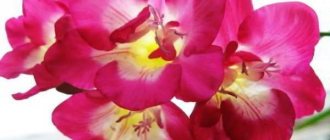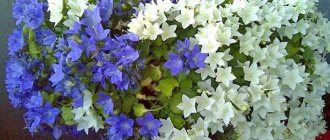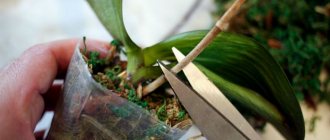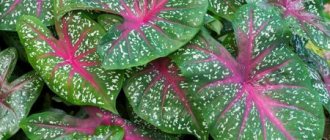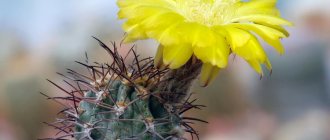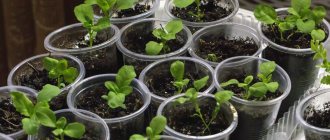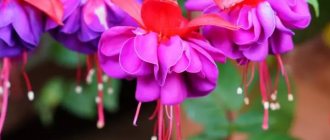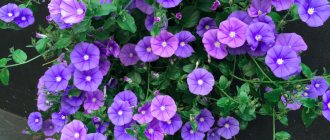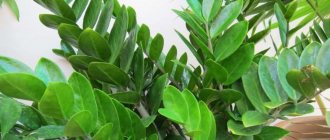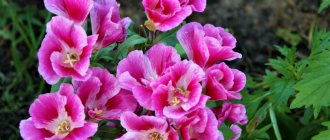Exotic plants with fabulous flowers that look like colorful butterflies are alstroemeria. Its flowers resemble freesia flowers, but they are larger and much more attractive, occurring in numerous colors, often multi-colored. Flowers can be grown for bouquets and as a garden or indoor plant. In this article we will tell you how to grow alstroemeria flowers - planting and care in open ground, show photos of interesting varieties, tell you where you can plant it and what substrate to choose for the pot.
Growing alstroemeria from seeds
How to grow alstroemeria from seeds so that it pleases you with its future flowering? There are two strategies for growing alstroemeria from seeds : directly sowing them in the ground in April-May or seedlings in February or March.
If you plant the seeds immediately in a pot with soil, you will need to work less on the seedlings, but they will bloom only in the third year of life. And if you have patience and grow seedlings , you can expect alstroemeria to bloom in the second year.
- To grow seedlings, you need to prepare the soil, 2 parts of which will be leaf soil, and 1 part will be turf. You can add perlite or clean sand to the mixture to loosen it.
- The soil must be thoroughly mixed and frozen in the cold or spilled with a weak solution of potassium permanganate.
- Next, you need to take a container with drainage holes in the bottom, pour a layer of expanded clay 2 or 3 cm high into it, and then fill the container with earth, not reaching a few centimeters to the edge.
- You should lightly compact the soil and distribute the seeds on its surface, pressing them slightly into the ground and sprinkling soil on top.
- Then you need to place the container with the seedlings in a bag and send them to the refrigerator, on the vegetable shelf for cold scarification. The seeds must spend a whole month there at a temperature of +2 to +5 °C.
- Every day you need to ventilate the seeds 2 times a day, remove condensation from the bag and moderately moisten the soil.
- When the seeds are removed from the cold and placed in a sunny place with a temperature of +20 to +25 ° C, you can expect them to germinate in 10 or 20 days, and possibly even a month. It is very important all this time to ventilate the seeds 2 times a day for an hour and lightly moisten the soil as it dries.
- When the alstroemeria has grown from 2 to 4 true leaves after the cotyledon leaves, you need to pick it, that is, you need to plant the plants. Each seedling should receive a separate “housing” - a 100-200 ml glass with drainage holes, expanded clay and soil for adult plants.
- When the root system fills the entire glass, you can transplant the seedling into a flowerpot for an adult plant.
Read interesting things about the homeland of Tradescantia with us.
Indoor nightshade is surprisingly easy to keep at home. Read more in this article.
Caring for alstroemeria at home
For the garden, only varieties that can withstand sub-zero temperatures are chosen. Therefore, alstroemeria is often grown in a greenhouse or in pots at home. You definitely need to take care of good drainage. The plant is placed on a windowsill on the south side (shading is required on hot days). It is advisable not to place it near radiators so that the flower does not lose its leaves and buds from the dry air. Requires daily spraying and frequent watering with settled water (less often in winter).
The plant needs fertilizers containing potassium and phosphorus. A large number of leaves in the absence of flowers indicates an excess of nitrogen. In this case, it is necessary to adjust the feeding and change the composition of the fertilizers. Every spring, alstroemeria should be transplanted into a new container. You can buy ready-made soil that has neutral or weak acidity, or you can prepare the soil yourself by adding 2 parts of perlite and humus, and 3 parts of leaf soil to 2 parts of peat. Bouquets of alstroemeria stand in a vase with water for more than 1.5 weeks. The flower does not cause allergies and has a mild odor.
Alstroemeria will make any flower arrangement more elegant and graceful. The flower goes well in bouquets with irises, orchids, and roses. It gives the bouquet not only splendor and volume, but also sophistication and charm.
Recently searched:
Choosing a location and lighting
Alstroemeria loves light . In summer, a south-facing window will need shading, and in winter you don’t have to worry about sunburn. Alstroemeria requires about 14 hours of daylight for abundant flowering.
In summer, alstroemeria will feel great at room temperature , and in winter - from +8 or +15 °C. Summer temperatures above +28 °C will cause growth to stop and buds to drop. If it is too warm in winter, flower buds will not be able to develop and the plant will not bloom in summer.
What do lilies look like?
Language of flowers: alstroemeria.
meaning of the flower Lily can have different names, and it is used as breeding for the purpose of sale in flower salons. They are in demand and about 200 species are known, but only a few are recognized as the most popular.
Namely:
- Golden - the branches reach about 0.9 m in height, and the buds are saturated with orange color.
- Alicia - varieties have a characteristic bicolor appearance of pink and white petals.
- Virginia - shoots reach 70 cm and are located on a powerful thick stem with large soft white flowers that bloom in June.
- Lemon - distinguished by large flowers with an unusual shade of bright lemon appearance and a slightly greenish color.
- Brazil is a bush that reaches a height of 2 m.
- Blood-flowered - has luxurious inflorescences containing 15 buds.
Flowering of such seedlings occurs no earlier than in the 3rd year of life. In addition, from April to May, a mature tuber or part of it is planted on the site. Regardless of the specific form in which the planting is carried out, the place should be well lit, and it is absolutely unacceptable for there to be a lot of dampness.
Watering and humidity
In spring and summer, watered sparingly, waiting for the soil to dry out between waterings. In winter, watering should be limited - the cooler the content, the less moisture the plant requires.
Waterlogging and drought are equally dangerous for alstroemeria. It is necessary to spray alstroemeria only in hot weather.
Remember that water for irrigation and spraying should be soft and at room temperature.
Using Alstroemeria flowers in garden design and floristry
The culture looks good in individual plantings, in combination with other flowers. Low-growing varieties organically decorate garden tracks and flower beds. Tall views become an original background in group flower beds. Bush Alstroemeria and Chrysanthemum and spray roses get along well in one flower garden.
The crop is widely used for growing in pots, decorating the home space with them.
The most popular way to use it is to make bouquets. The culture looks great in an individual bouquet, and also harmoniously complements other flowers. Bouquets of chrysanthemums and roses framed with alstroemeria will look magical. Due to the extreme durability of the flower, such a composition can stand in a vase for several weeks.
Having studied Alstroemeria, its planting and care in the open ground, you will be able to easily grow such a beauty on your own site.
Transfer
Planting and caring for alstroemeria requires an annual transplant in the spring.
For a very powerful and rapidly developing root system of the plant, a large pot with a deep bottom is required. A quarter of the pot should be occupied by drainage in the form of pebbles or expanded clay.
The ideal soil mixture for adult alstroemeria is:
- 2 shares of leaf soil;
- 1 share of humus soil;
- 1 share of peat land;
- 1 share of pine bark;
- 1 share of perlite or vermiculite.
You can also use ready-made soil for azaleas.
Alstroemeria hybrids
Numerous alstroemeria hybrids have a varied palette of flower colors. Apart from Ligtu Hybrids, which bloom in early summer, all others bloom from mid-summer until the first autumn frosts. Most hybrids grow up to 1 m, although there are also dwarf varieties that are excellent for potting.
Princess Mira
Lilac-pink flowers with a white throat. The height of the plants is also no more than 30 cm.
Lilac-pink flowers
Charm
Pale pink flowers with creamy yellow inner petals.
Pale pink flowers
Yellow Friendship
The outer petals are lemon yellow, the inner petals are dark yellow. The upper inner petals are speckled with brown.
Outer petals are lemon yellow
Princess Caroline
Delicate apricot-orange flowers with red dots on the outer petals and a yellow throat.
Delicate apricot-orange flowers
Mars
Brick-red petals with yellow speckles, inner petals with brownish-purple speckles. The inner petals of “Orange Glory” have yellow and brown speckles.
Brick red petals
Marina
Dark pink flowers with a lemon yellow center.
Dark pink flowers with lemon yellow centers
Ligtu Hybrids
They produce flowers in a variety of colors, from pastel pink to bright orange and yellow.
Produces flowers of various colors
Apollo
The flowers are creamy white with yellow and brown spots on the inner petals.
The flowers are creamy white with yellow and brown spots
Princess Elizabeth
The flowers are cream with a pink tint and a yellow throat. This hybrid is only 30 cm tall.
The flowers are cream with a pink tint and a yellow throat.
Diseases and pests
Due to its susceptibility to many diseases, alstroemeria needs preventive treatment with Fundazol several times a year.
Among the pests, alstroemeria can be favored by the following representatives: spider mites, flower thrips, and mealybugs.
As you can see, alstroemeria is not a very capricious plant that can be grown indoors.
Even a novice gardener can grow alstroemeria from seeds, and caring for it will not be difficult. You just need to treat the plant with love and attention - and alstroemeria will answer you with a scattering of wonderful “Peruvian lilies”, bringing wealth and happiness to your home.
And for the most curious, we invite you to watch a video about alstroemeria https://www.youtube.com/watch?v=ZZa7HiIxFtU
Description of the plant
Alstroemeria or Alstroemeria L. is a genus of herbaceous plants belonging to the Alstroemeriaceae family, numbering more than 100 species. Its range covers central South America, from Chile to Ecuador in the west and to Argentina and central Brazil in the east.
Many species and varieties are grown for their original, long-lasting flowers for decorative purposes, as garden plants or as cut flowers for bouquets. Spotted patterns of different colors add charm to alstroemeria - the most typical are shades of yellow, pink or salmon. Like lilies, flowers are produced at the tips of leafy stems.
Sometimes, instead of the name “alstroemeria”, the version “alstroemeria” appears - this is often written in Russian-language sources. The Latin version of the name is alstroemeria. The version written and pronounced with an "e" is correct and has been in use for a long time. The confusion arose due to the fact that the Latin name comes from the surname of Clasa Alströmera, a Swedish traveler and explorer. He was a student of the famous botanist Carl Linnaeus, for whom he collected plant seeds while traveling through the countries of South America. From one such trip he brought alstroemeria seeds. The letter ö is written as "oe", but in Swedish its pronunciation is close to "ё". Also in Latin, "oe" is pronounced like "e".
In some countries, alstroemeria is called:
- dwarf lily;
- Lily of the Incas (due to place of origin);
- Peruvian lily.
Botanical characteristics:
- Plants with hard leafy shoots growing from an underground rhizome.
- The rhizome is fleshy, white, branched. Depending on the species, the rhizome is shorter or longer, growing more vertically or horizontally. Stems grow from the upper part, and roots grow from the lower part, which can be thin or thick, tuberous (accumulative).
- The stems are unbranched, rigid, growing from the rhizome. There are vegetative (densely leafy) and generative (forming inflorescences) shoots.
- The leaves are narrow at the base, entire, alternate. The leaf blades are twisted 180° (bottom side up), wrapped around the stem.
- Flowers - collected in an inflorescence, the branches of the first row form an umbrella, the subsequent ones form sickles with flowers developing sequentially, one after the other. Individual petals are colorful, directed downwards along the inner whorl, different from the others, facing upwards. The petals are arranged in 2 circles, 3 pieces in each, there are 6 in total. The neck of the pistil is thread-like, there are 6 stamens.
- The fruit is a capsule, there are many seeds.
Flowers appear on the plant in summer and form a large inflorescence at the top of an elevated stem.
general information
Alstroemeria is an unusual visitor from South America and has long been called the Lily of the Incas. It received its current name after Baron Aström, a famous Swedish botanist who brought several species to Europe. It was the eighteenth century, and since then alstroemeria has won the love of flower growers around the world.
Alstroemeria has flexible straight stems with thin lily leaves, the petiole of which is twisted, due to which the upper side of the plate is below, and vice versa. The rhizome resembles a spindle and goes deep into the ground, drawing out nutrients.
The lanceolate petals are collected in two circles, and they are different in shape, size and even shades. Yellow, pink, orange and red varieties are popular, but this is not the limit. There are multi-colored, striped and spotted flowers with long, protruding stamens.
Alstroemeria is kept in gardens, greenhouses and greenhouses. Low-growing species are planted in boxes or containers to decorate balconies, gazebos and seasonal flower beds. Varieties vary greatly in height and size, so first be sure to decide on the composition you want to get.
Preparing flowers for winter
Despite the fact that adult alstroemeria tolerates winter well in temperate latitudes (minus 20 outside is the minimum that the plant can withstand), it is better to play it safe and make a small shelter for the winter. Be sure to cover young plants, because in severe frosts they can freeze completely. Some summer residents dig up small bushes, like chrysanthemums, and leave them for the winter in frost-free rooms. Typically, dry, cool basements are ideal for this.
Well-developed bushes and wintering young growth are covered for the winter with sawdust, fallen leaves, reeds, spruce branches, dry grass or straw. Insulated bushes can be covered with roofing felt. Before this procedure, we shorten all above-ground shoots by the same 7 cm (see above). In the southern regions of the country it is not necessary to cover this flower for the winter.
Reproduction
You can propagate an exotic bush in several ways:
- The first involves dividing an adult bush into several segments, leaving several growth points on each.
- The second (planting seeds) allows you to get quite a lot of seedlings at once.
However, in the case of obtaining seedling material with your own hands, you should take into account the distinctive feature of alstroemeria seeds and adhere to the following sequence:
- A couple of months in advance, you need to place the seeds in a damp cloth and place them on the refrigerator shelf, not forgetting to check for the appearance of mold. This procedure is called stratification.
- After the specified time has passed (you can sow starting from the end of winter), the material is distributed into peat pots for further germination.
